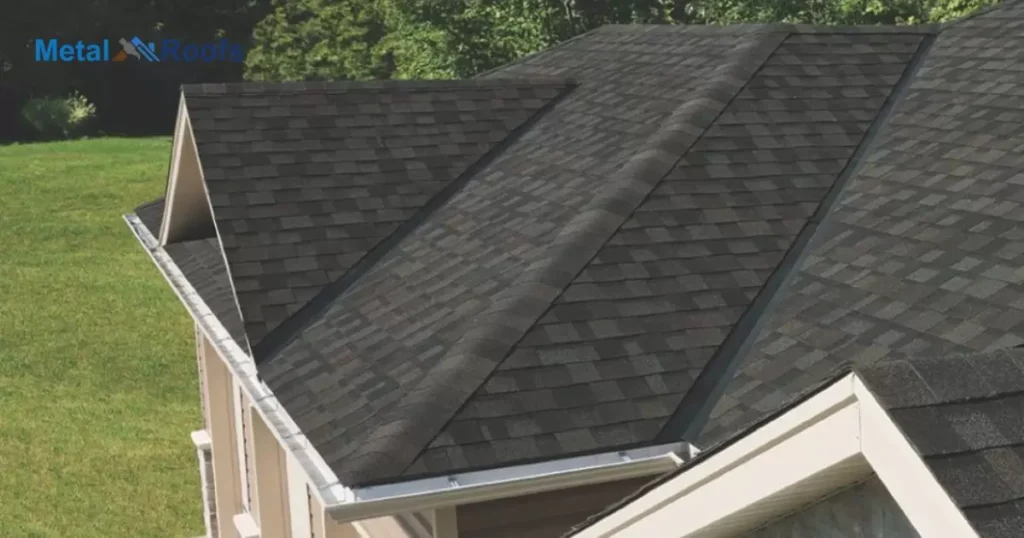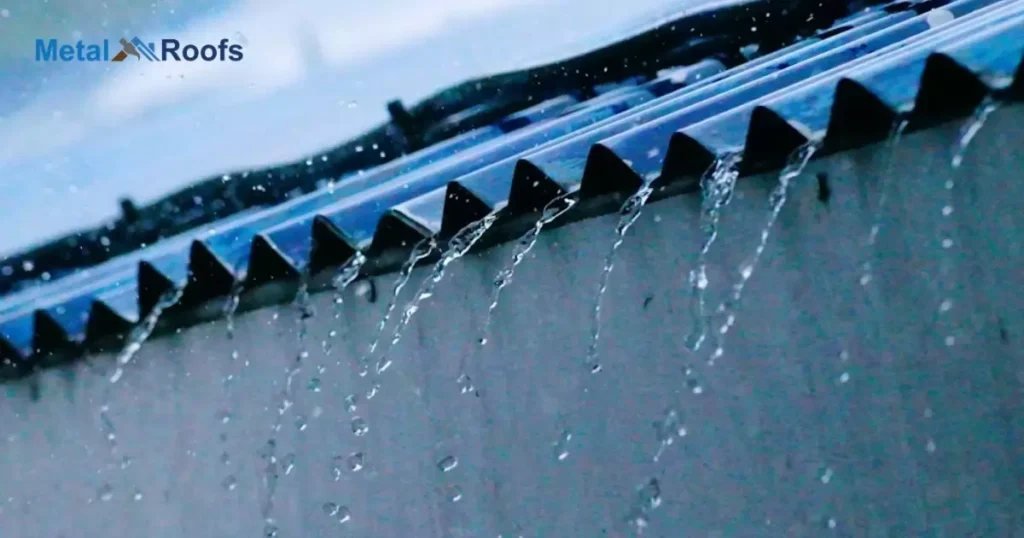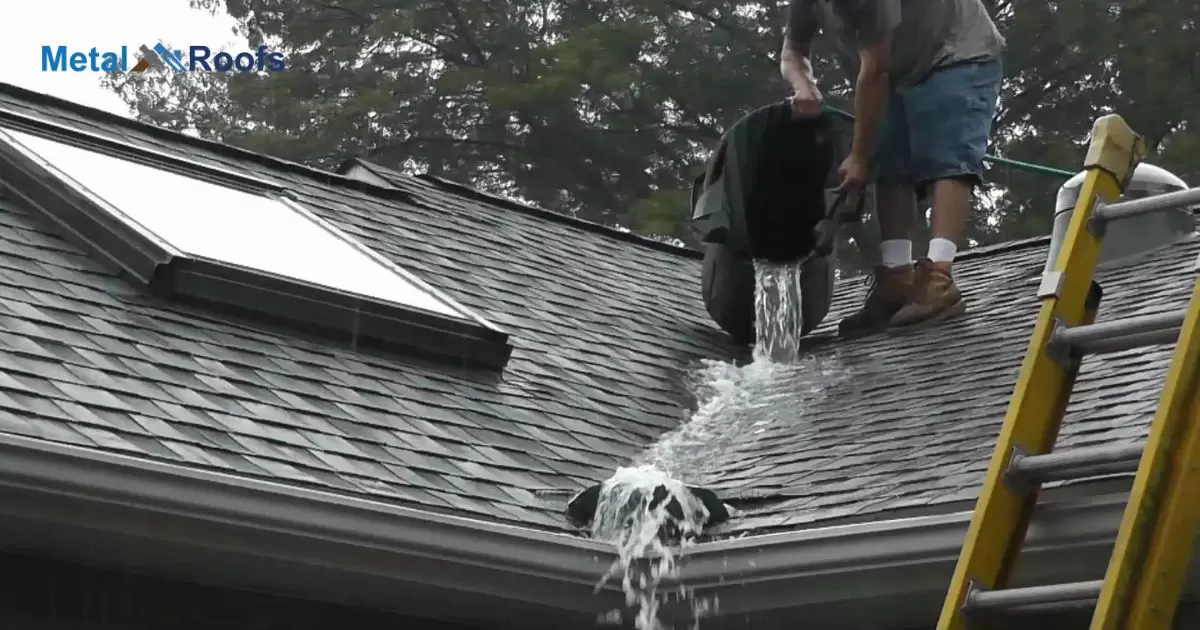A roof valley is the inner corner where two roof surfaces meet. A rain diverter is installed here to guide water off the valley into gutters instead of allowing it to collect and seep into the house. They prevent leaks and water damage.
Rain collects where roof valleys meet. With no gutters, water can pool and leak inside, causing damage. A rain diverter installed in the valley catches and redirects the flow away from the home. It’s a simple solution to prevent wet walls or ceilings when there are no gutters to carry it off.
They fit into the roof valley to catch water. The diverter redirects the flow out and away from the house. Without it, the valley would fill and leak inside. By draining the collected rainwater, damage is prevented. The diverters provide an affordable fix for protecting your home.
Key Takeaways
- Roof valley rain diverters prevent water accumulation at roof intersections.
- Without gutters, effective drainage solutions are vital for diverting rainwater.
- Maintenance is key to ensuring rain diverters function correctly.
- Proper installation ensures rain diverters work efficiently.
- Regular inspection prevents potential damage from water backup.
What Is A Roof Valley Rain Diverter For Metal Roofing?
Metal roofing joins in valleys at angles. Rain collects there and causes rust and leaks. Diverters fit into the valleys to catch water. They drain it off the roof before damage starts.
The diverter has a channel to redirect flow. Without them, valleys fill and seep through seams. Need Ice And Water Shield Under Metal Roofing They come in sizes to match metal valley angles. Install them before rain comes to protect a metal roof.
Roof Valley Rain Diverter Work Without A Gutter On Metal Roofing
Roof valleys are formed where two roof sections join at an angle. Rainwater runs down and collects in these roof valleys, with no way to drain. The pooled water will penetrate and leak through roof seams.
Roof valley rain diverters install directly into the angled valley. Custom fitted, they catch all the rainwater flow from above. The diverter has a channel that redirects the water into a downspout draining system.
Advantages Of Using A Roof Valley

- Roof valleys allow seamless junctions between different roof slopes and angles, enabling more dynamic roof designs.
- Valleys provide integrated channels to collect and direct rainwater runoff into gutters, preventing pooling.
- The angle of roof valleys assists with gravitational pull to help drainage flow into gutters without leakage.
- Integrated diverters in valleys provide additional water protection keeping interiors dry.
- Proper valley materials, construction and integration critical to prevent leaks, moisture damage, rot, and maintain structural integrity.
Disadvantages Of Using A Roof Valley
- Valleys can collect debris and prevent proper water runoff leading to clogs and backups.
- Improper valley design or construction can result in leaks, water penetration, and roof rot.
- Valleys may not integrate well with certain roof designs or materials complicating projects.
- Difficult to properly inspect and maintain valleys once shingles are installed requiring extra diligence.
- Expense of using heavier gauged valley flashing materials and precision fabrication adding to overall roofing costs.
Types Of Roof Valley Rain Diverters For Metal Roofing
Open Metal Valley
- The simplest and most affordable option. The adjoining metal roof panels simply meet in the valley crease, exposed to the elements. Not recommended in areas with heavy rain or snow as water/ice can build up.
Closed Cut Valley
- The roof panels overlap in the valley, with one cut close to the crease so it can be folded over the top of the adjoining panel. Provides better weather protection.
Standing Seam Valley
- Used when installing standing seam metal roofing. Taller seam allow a watertight seal. More complex installation but superior performance.
W-Valley Flashing
- A ‘W’ shaped flashing installed in the valley. Very effective diverter of rain and snow and compatible with many roof styles. More costly than open or closed cut valleys.
Snow Guards
- Installed above valley to hold snow in place and slow melt, helping prevent ice dam buildup along the roof valley. Highly recommended in cold climates.
Heated Valley System
- Runs a heating cable or hydronic tubing along the valley, melting snow to prevent damming and ice. More complex but very effective in heavy snow regions.
The best choice depends on climate, roofing type, budget and performance needs. An experienced roofer can advise on optimal valley protection for a given metal roof. Regular cleaning and maintenance is also important.
Materials Used For Making Roof Valley Rain Diverters For Metal Roofing

The most common materials used to construct roof valley rain diverters for metal roofing include:
Galvanized Steel – Most affordable option. Galvanized coating resists rusting. Thickness is 26 gauge up to more durable 24 gauge for heavy snow regions.
Aluminum – Very lightweight and corrosion resistant. More expensive than steel but with a longer lifespan. Typically available in thicknesses from 0.019″ up to 0.032″.
Copper – Naturally rust-proof and architecturally elegant. Copper develops a distinctive patina over time. High material costs but exceptional durability. Usually 16 oz up to 20 oz thickness.
Stainless Steel – Extremely durable and longest lasting option, but also the most costly. Common grades are 304 and 316 stainless, ranging from 26 to 20 gauge thickness. Withstands corrosion and pitting.
Rubber Membranes – Flexible EPDM or TPO rubber sheets create a waterproof valley. Requires precise installation but then seamless protection, often with peel-and-stick application.
PVC Plastic – Readily formed plastic valley diverters are chemical and rust proof. Lightweight and affordable but not as durable or attractive as metal options.
The specific gauge, grade and fitting method depends on roofing type, climate and desired lifespan. Qualified roofing contractors can recommend appropriate valley materials and installations to suit a home’s unique needs and budget.
Maintain A Roof Valley Rain
Roof valleys channel large amounts of rainwater. Debris builds up and blocks proper drainage. Inspect and clean valleys when storms end. Make sure no shingles dislodged to redirect flow.
Letting debris stay traps moisture and puddles form. Algae and moss grow clogging drainage over time. Check valley diverters function after storms. Keep them cleared for max protection.
Repair A Roof Valley Rain Diverter On Metal Roofing
Roof rains flow down into valleys where slanted sections join. Diverters are inserted to catch the water and drain it off. Without them the valleys flood causing interior leaks. Protect all valleys with specialized fitted drain parts.
Metal roofing relies on diverters to avoid rust and rot. The valleys where they join is vulnerable to pooled moisture. Fitted to angle, diverter channels carry rainwater out and away. Inspect them routinely to prevent expensive metal roof repairs.
Replace A Roof Valley Rain Diverter On Metal Roofing
To replace a roof valley rain diverter on metal roofing, start by assessing the current diverter’s condition. Clean the area thoroughly to remove any debris or dirt that could interfere with the new installation. Choose a suitable replacement diverter based on the size and shape of your roof valley.
Carefully remove the old rain diverter using the appropriate tools. Follow the manufacturer’s instructions to install the new diverter securely in place. Ensure proper alignment along the roof valley to effectively redirect rainwater away from the area.
Finally, monitor the new diverter regularly to ensure it remains securely attached and free of debris for optimal performance and protection of your metal roof.
Clean A Roof Valley Rain Diverter On Metal Roofing

| Step | Description |
| Gather Supplies | Prepare equipment like ladder, gloves, brush, and detergent. |
| Safety | Ensure ladder stability and wear appropriate gear. |
| Remove Debris | Clear diverter of leaves and dirt with brush or hose. |
| Inspect | Check for damage or rust while cleaning. |
| Check Flow | Ensure smooth water flow and clear blockages. |
| Monitor | Regularly inspect and clean, especially after storms. |
| Address Repairs | Repair or replace damaged parts to maintain integrity. |
Cleaning a roof valley rain diverter on metal roofing is essential for maintaining proper water flow. Begin by removing any debris or leaves accumulated in the diverter. Use a brush or hose to gently scrub away dirt and grime.
Regular maintenance ensures optimal performance and prevents water backup. Check for any signs of damage or rust and address them promptly to avoid leaks. Keeping the rain diverter clean helps protect your roof and prevents water damage to your home.
Frequently Asked Questions
What is the alternative to gutters?
An alternative to gutters is installing a rain diverter or using a French drain system.
How do you slow down water in a roof valley?
Install a roof valley rain diverter or use roofing materials to create a gentle slope.
What is a roof valley gutter?
A roof valley gutter is a channel that directs water along the intersection of two sloping roof sections, preventing water buildup and potential damage.
Conclusion
Water flows down into valleys formed by joining roof sections. Without diverting it, the water penetrates the roof. Diverters install easily to catch and redirect the water away. They drain rain buildup through extended downspouts to protect your home. They prevent erosion and leaks into a home’s interior.
The diverters fit snugly in the roof valleys to catch rainwater. They channel the captured water through a downspout and away from the house. Regular gutter systems often fail to catch this valley flow. But with these inexpensive diverters, you prevent erosion and interior water damage. Protect your biggest investment – install roof valley rain diverters.











